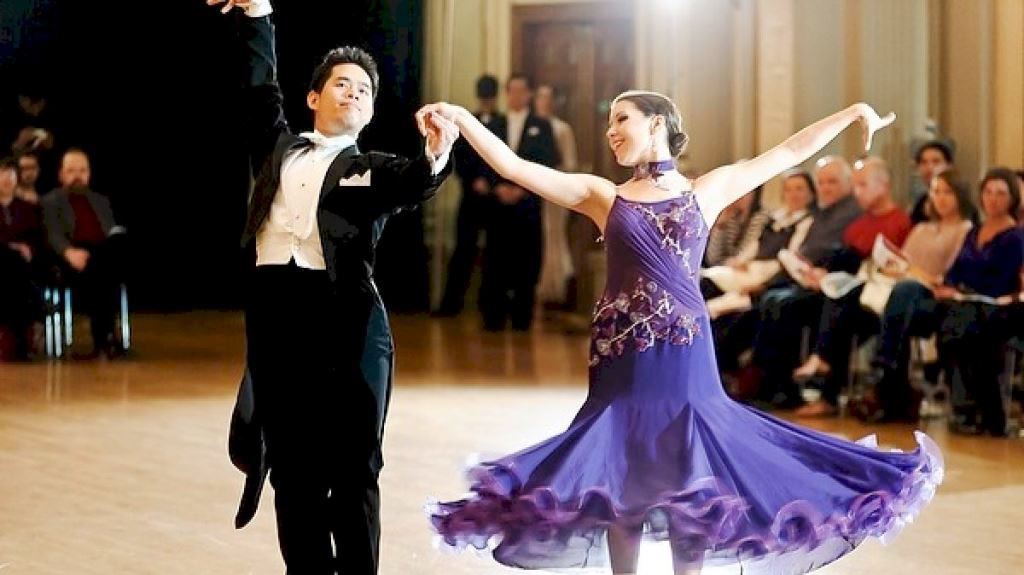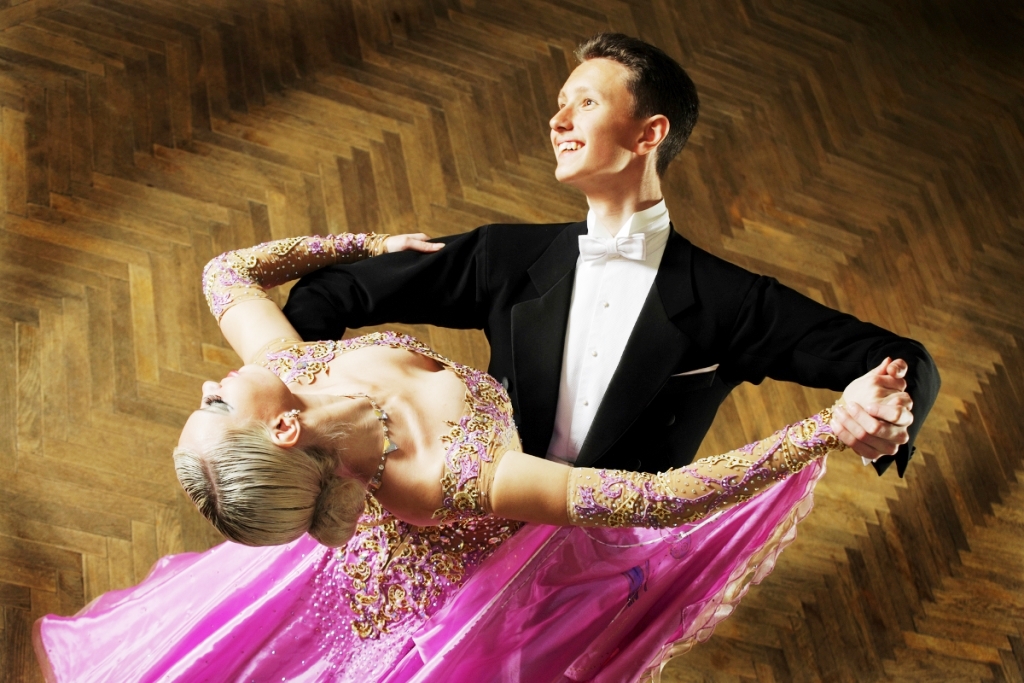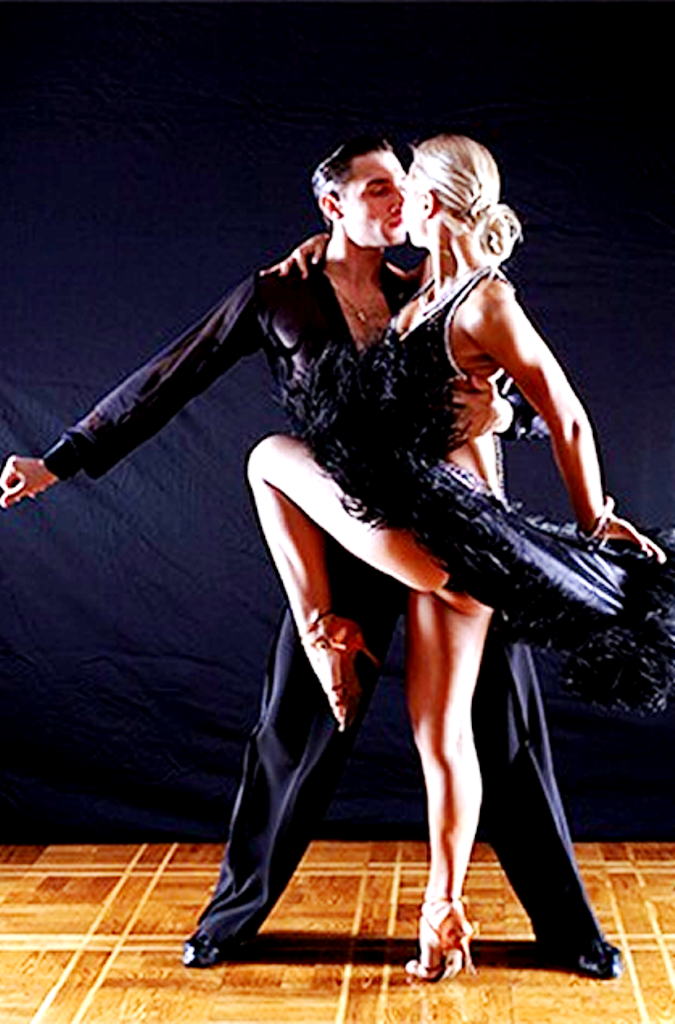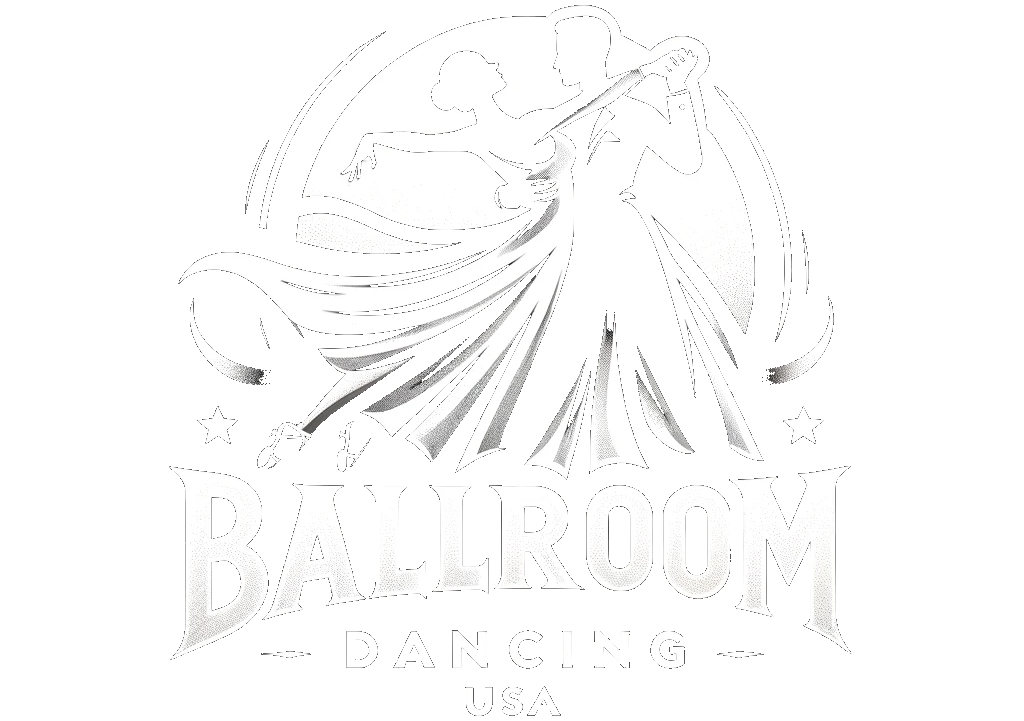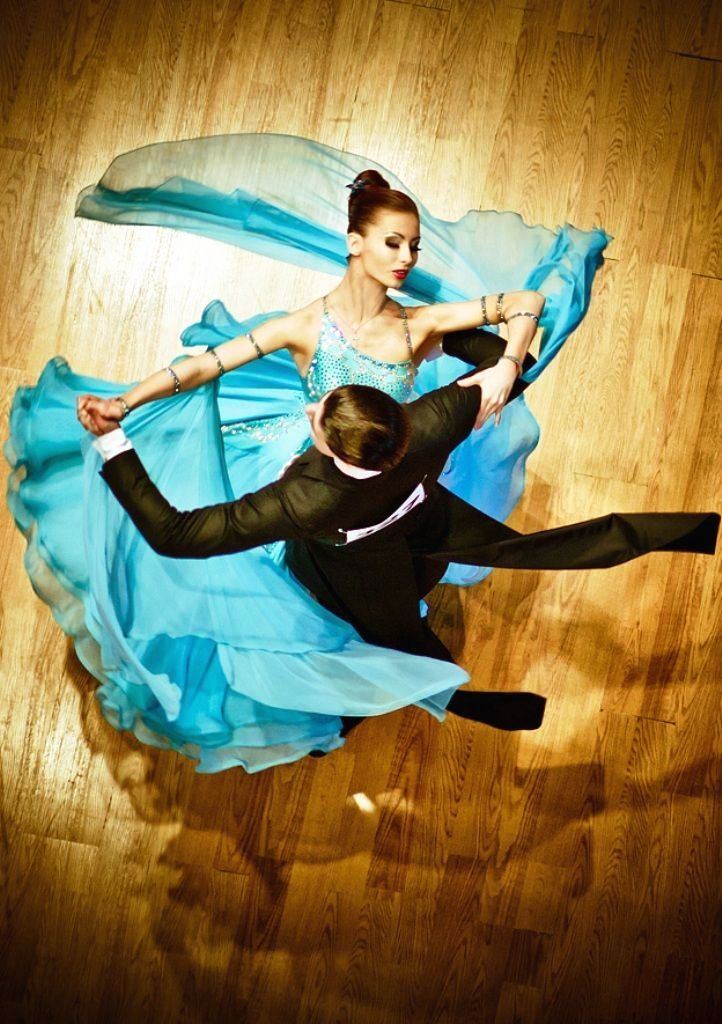
1. Introduction to Ballroom Dance
Introduction to Ballroom Dance
Ballroom dancing has been a popular form of entertainment and exercise for centuries. It is a social dance that is performed by two people in a formal setting, usually a dance floor. The style of ballroom dancing varies from region to region, but the basic steps and techniques are the same.
Ballroom dancing is a great way to stay fit, meet new people, and have fun. It is an art form that requires dedication, practice, and skill. Whether you are an experienced dancer or just beginning, it is important to understand the basics of ballroom dancing before you start.
What is Ballroom Dance?
Ballroom dancing is a form of partner dancing that follows specific steps and techniques. The two partners move in harmony with each other, often in a circular pattern. The steps are usually performed in time with music, and the two partners must be in sync with each other.
The most popular ballroom dances are the waltz, the foxtrot, the tango, the quickstep, and the Viennese waltz. Each of these dances has a different set of steps and techniques.
Techniques of Ballroom Dance
The techniques of ballroom dancing involve a combination of body movement, timing, and coordination. The two partners must move in harmony with each other, using the same steps and techniques.
The basic techniques of ballroom dancing include posture, footwork, body alignment, and balance. Posture is the foundation of ballroom dancing, and it is important to maintain a good posture while dancing. Footwork involves the use of the feet to execute steps and turns. Body alignment and balance are also important for ballroom dancing, as the two partners must be in sync with each other.
Conclusion
Ballroom dancing is a great way to stay fit, meet new people, and have fun. It is an art form that requires dedication, practice, and skill. Understanding the basics of ballroom dancing is essential for any dancer, as it will help you to move in harmony with your partner and execute the steps and techniques correctly.
2. History of Ballroom Dance
History of Ballroom Dance
Ballroom dancing has a long and rich history in the United States, having been brought to the country by European immigrants and African slaves. The earliest documented ballroom dance in America dates back to the late 1700s, when English and Irish immigrants brought their folk dances to the New World.
In the 19th century, the popularity of ballroom dancing grew significantly, with the development of the waltz, polka, and quadrille. These dances were commonly performed at social gatherings such as balls, cotillions, and other formal events.
20th Century
By the early 1900s, the popularity of ballroom dancing had spread across the country. In the 1920s, the foxtrot and the Charleston became popular, with the former being the most popular dance of the decade. The 1930s saw the emergence of the jitterbug and the lindy hop, which quickly became the most popular dances of the era.
In the 1940s, Latin American dances such as the samba, rumba, and cha-cha began to gain popularity. These dances were particularly popular among the younger generation, who embraced the exotic rhythms and steps.
In the 1950s, rock and roll began to take hold in the United States, and ballroom dancing began to take a backseat to the new style of music. However, the popularity of ballroom dancing surged again in the 1970s, when the movie Saturday Night Fever popularized the hustle.
Modern Ballroom Dancing
Today, ballroom dancing is still popular in the United States, with many people taking lessons and competing in competitions. There are a variety of different styles of ballroom dancing, such as American Smooth, American Rhythm, Latin, and International Standard.
Ballroom dancing is a great way to get exercise, make friends, and have fun. Whether you’re a beginner or an experienced dancer, there are plenty of opportunities to learn and enjoy the art of ballroom dancing.
3. Types of Ballroom Dances
Types of Ballroom Dances
American Smooth
American Smooth is a style of ballroom dance that is a combination of traditional ballroom dances, such as the waltz, foxtrot, and tango, with more modern moves. It is characterized by its smooth, flowing movement and its use of improvisation.
American Rhythm
American Rhythm is a style of ballroom dance that is based on Latin dances, such as the cha-cha, rumba, and mambo. It is known for its fast-paced, energetic movements and its use of syncopated rhythms.
International Standard
International Standard is a style of ballroom dance that is based on the traditional dances of Europe, such as the waltz, foxtrot, and tango. It is characterized by its precise movements and its adherence to a strict set of rules.
4. Techniques of Ballroom Dance
Techniques of Ballroom Dance
Ballroom dance is an art form that requires skill and precision. It is a combination of physical and mental activities that involve coordination, agility, and grace. The techniques of ballroom dance are based on the fundamental steps of the particular dance, which are then combined to create complex and intricate patterns.
Footwork
Footwork is the foundation of ballroom dance. It is the most basic element of all the ballroom dances, and it is the first step in learning the techniques. Footwork involves the use of the feet to move around the dance floor in a specific pattern or rhythm. The footwork of each dance is unique and must be mastered before attempting the more complex steps.
Timing
Timing is the second most important element of ballroom dance. It is the ability to move in perfect sync with the music and partner. Timing is essential for all ballroom dances, and it is a skill that is developed through practice. The timing of a dance is determined by the tempo of the music and the number of beats in each measure.
Body Movement
Body movement is another important technique of ballroom dance. It involves the use of the arms, legs, torso, and head to create a graceful and elegant look. Body movement is used to express the music and to create a pleasing visual effect. It is important to keep the body in proper alignment and to maintain a good posture while dancing.
Lead and Follow
Lead and follow is the most important technique of ballroom dance. It is the ability to respond to the lead of the partner and to follow their movements. The lead is responsible for initiating the steps and for setting the tempo of the dance. The follow must be able to anticipate the lead’s movements and to react accordingly. Lead and follow is a skill that must be practiced and perfected in order to become a successful ballroom dancer.
5. Benefits of Learning Ballroom Dance
Benefits of Learning Ballroom Dance
1. Improved Physical Health
Ballroom dancing is a great way to get physical exercise. It is a low-impact activity that can help improve your cardiovascular health, build muscle strength, and increase flexibility. Additionally, it can help you maintain a healthy weight.
2. Increased Confidence
The physical and mental benefits of learning ballroom dance can help you feel more confident in yourself and your abilities. As you learn new steps and gain experience, you will find yourself becoming more confident in your dancing ability and in your own self-image.
3. Improved Social Skills
Learning ballroom dance can help you build relationships with others. Dancing is a great way to meet people, make friends, and practice communication skills. Learning ballroom dance can also provide a great way to connect with your partner.
4. Stress Relief
Ballroom dancing can be a great way to reduce stress and relax. The physical activity helps to release endorphins, which can help to reduce stress levels. Additionally, the social aspect of dancing can help to lift your mood and provide a sense of joy and accomplishment.
5. Fun and Enjoyment
Learning ballroom dance can be a great way to have fun and enjoy yourself. The music, the steps, and the connection with your partner can all add to the joy of the experience. Whether you are dancing for fun or competing in competitions, ballroom dance can be an enjoyable and rewarding activity.
6. Tips for Beginners
Tips for Beginners
1. Start with the Basics
The best way to learn ballroom dancing is to start with the basics. Take a class or two to learn the basic steps, and practice them until you feel comfortable. This will give you a solid foundation to build on as you move forward.
2. Find a Partner
Having a partner to practice with is essential when learning ballroom dancing. Not only will it help you learn the steps more quickly, it will also help you to stay motivated and have fun.
3. Take it Slow
When learning ballroom dancing, it’s important to take it slow. Don’t rush and try to learn all the steps at once. Take your time and focus on mastering the basics first.
4. Listen to the Music
Listening to the music is key when it comes to ballroom dancing. Pay attention to the beat and the rhythm, and practice the steps in time to the music.
5. Have Fun
Above all, remember to have fun! Ballroom dancing is a great way to get exercise and socialize, so don’t be afraid to let loose and enjoy yourself.
6. Don’t Be Discouraged
Finally, don’t be discouraged if you don’t pick up the steps right away. Ballroom dancing takes practice and patience. With some dedication and hard work, you’ll be dancing like a pro in no time.
7. Common Mistakes to Avoid
7. Common Mistakes to Avoid
1. Not Learning the Steps
The most important part of ballroom dancing is learning the steps. Without a solid understanding of the basics, it can be difficult to progress to more advanced techniques. Be sure to take the time to learn the steps and practice regularly.
2. Not Practicing
Ballroom dancing is a skill that requires regular practice in order to improve. To become proficient in the techniques of ballroom dancing, it is important to practice regularly and make adjustments as needed.
3. Not Listening to Music
Listening to music is an important part of ballroom dancing. Not only does it help to set the tempo and rhythm, but it can also help to improve your timing and coordination.
4. Trying to Go Too Fast
It is important to take your time when learning the techniques of ballroom dancing. Trying to go too fast can lead to mistakes and can make it difficult to keep up with the music.
5. Not Being Open to Trying New Things
Ballroom dancing is a constantly evolving art form. Be open to trying new techniques and styles. This can help to open up new possibilities and can help to make your dancing more interesting.
6. Not Focusing on Posture
Good posture is essential in ballroom dancing. Poor posture can lead to a lack of balance and coordination, which can make it difficult to execute the steps properly.
7. Not Having Fun
At the end of the day, ballroom dancing should be fun. Don’t be afraid to let loose and enjoy yourself. After all, that’s what it’s all about!
8. How to Find a Ballroom Dance Studio
How to Find a Ballroom Dance Studio
Finding a ballroom dance studio that meets your needs is an important step in exploring the techniques of ballroom dance. Here are some tips to help you find the right studio.
Research Online
The internet is a great tool for researching ballroom dance studios in your area. Check out the websites of studios and read reviews to get an idea of what to expect.
Attend Classes
Once you have narrowed down your choices, attend a few classes to get a feel for the atmosphere and instruction. Make sure to ask questions and get to know the instructors.
Check for Certification
Be sure to check that the instructors are certified in ballroom dance. Look for instructors who have experience and credentials in the style of dance you are interested in.
Find Out About Fees
Ask about fees and payment options before signing up for classes. Also, inquire about any discounts or packages that may be available.
Look for Opportunities to Perform
Many studios offer performance opportunities for their students. This can be a great way to show off your skills and practice your technique in front of an audience.
Consider Group Lessons
Group lessons can be an affordable way to learn ballroom dance. They also provide an opportunity to practice with others and build relationships with other dancers.
Check for Special Events
Many studios offer special events such as competitions or workshops. These can be a great way to learn new techniques and make connections in the ballroom dance community.
Find a Studio That Fits Your Needs
When choosing a studio, make sure to find one that fits your needs. Consider the atmosphere, instruction, fees, and other factors to ensure that you have the best possible experience.
9. Conclusion
Conclusion
Ballroom dance is a beautiful and complex art form that requires skill, dedication, and practice to master. It is an activity that promotes physical fitness, social interaction, and creative expression. With the right technique and instruction, anyone can learn to ballroom dance and experience the joy and fulfillment of a successful performance.
At ballroomdances.org, we strive to provide our readers with the best possible information about ballroom dancing. We hope that this article has given you a better understanding of the techniques of ballroom dance and the importance of mastering them.
Take the First Step
If you’re interested in learning more about ballroom dance, we encourage you to take the first step and find a qualified instructor. With the right instruction and practice, you can become a confident and competent ballroom dancer.
Have Fun!
Finally, don’t forget to have fun! Ballroom dancing is a great way to stay active, make friends, and express yourself creatively. Enjoy the process and don’t be afraid to make mistakes. With practice and dedication, you can become a skilled ballroom dancer.
